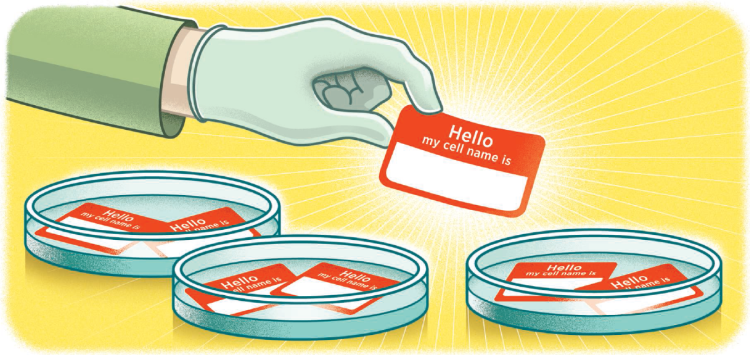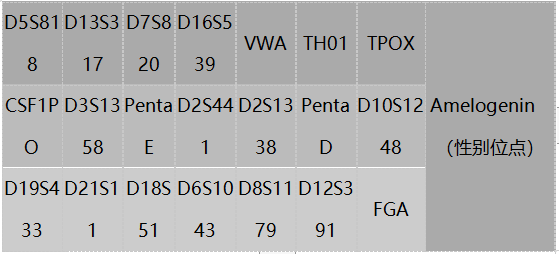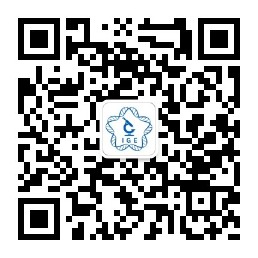Welcome to Guangzhou IGE Biotechnology Co., Ltd. Website !
According to statistics, about 30% of cell lines are contaminated or misidentified. Using contaminated or misidentified cells can lead to incorrect research conclusions, irreproducible results, and disastrous consequences for clinical cell therapy, which wastes a lot of time, effort, and money.
Therefore, in recent years, NIH, ATCC, Nature, and Science have repeatedly called for cell identification. For example, in 2011, the American National Standards Institute issued a national standard for cell STR identification. In December 2014 and February 2015, Science published articles on the seriousness of cell contamination and misidentification. In April 2015, Nature announced that authors would be required to identify the cell lines used in their papers starting in May 2015. In June 2015, it was reported that a scientist withdrew a Nature paper because he used the wrong cell line.
STR (Short Tandem Repeat, short tandem repeat) gene typing has been used as the gold standard by authoritative organizations such as ICLAC and ATCC for cell identification. More and more journals are now requiring cell STR typing data to be submitted at the time of submission.

STR gene loci are composed of short tandem repeats of 3 to 7 base pairs. These repeats are widely present in the human genome and can be used as highly polymorphic markers, which are called the DNA fingerprints of cells (currently used in paternity testing). They can be detected by PCR (polymerase chain reaction).
Before publishing a paper or applying for a research grant;
Before using cells for clinical treatment (trials);
Before freezing and storing cells or cells that have been frozen for many years;
At the beginning or end of a project involving cell experiments;
For new cells or cells that have been cultivated in the laboratory for more than 5 generations;
When cell lines are unstable or the results are significantly different from expectations.
· Nature;
· BioTechniques;
· Cancer Research;
· Cancer Discovery;
· Clinical Cancer Research;
· Molecular Cancer Research;
· Cancer Prevention Research;
· International Journal of Cancer;
· Molecular Cancer Therapeutics;
· Cell Biochemistry and Biophysics;
· Cancer Epidemiology, Biomarkers & Prevention;
· In Vitro Cellular & Developmental Biology – Animal;
· ......
Professional team: With nearly 5 years of experience in paternity testing, we have a professional cell biology service team that can professionally interpret cell STR data.
Professional report: Issue a Chinese/English report (including STR typing map and search results)
High accuracy: Meets the latest ANSI/ATCC standards, with test results 99.99% consistent with the literature.
Standard testing and analysis: ABI3130 and 3730 genetic analyzers and GeneMapper data processing software;
Multi-gene detection, high sensitivity: Can simultaneously detect 21 STR loci, requiring only 2ng DNA to determine cell type and possible cell contamination;
Common 21 STR locus names

High cost-effectiveness: Competitive service prices and comprehensive after-sales technical support services.
Fast delivery: 3 to 5 working days for 1 to 48 samples, 4 to 7 working days for 49 to 96 samples.
Human cell STR typing;
Mouse cell STR identification;
Human/mouse cell cross-contamination detection.

1、What is the use of cell STR identification?
A:Cell STR identification is mainly used for customers who use human cells for research and production, including but not limited to the following fields: medicine, genetics, drug development, vaccine development, biotechnology and pharmaceutical industry, regenerative medicine, stem cells, tumors, immune cell therapy, virus detection and treatment, and basic cell biology. Through cell STR identification, you can:
. Determine whether the cell you are cultivating is contaminated with other cells and the possible contaminated cell name;
. Clearly know whether the cells you are using are "correct" - a 2015 study reported that up to 85.51% of human cell lines established in China are wrong!
2、If the cells I need to identify do not have STR data reported in the literature, can I still do STR identification?
A:Although our STR database has the most comprehensive human cell line STR data, some cell lines that have not been reported with STR data (cell lines established in China) may not have their STR data in our database. However, we still recommend that you undergo cell STR identification, because through this test, you can:
Determine whether the cell you are cultivating is contaminated with other cells and the possible contaminated cell name;
You will be the first person to get the STR data (DNA fingerprint) of this cell line;
The STR data of this cell line will be stored in our database for easy access and comparison in the future.
3、My research results will not be published in Nature. Do I still need to do cell STR identification?
A:As long as you are using cells for related research work, we strongly recommend that you have your cells identified for the following reasons:
A 2015 study reported that up to 85.51% of human cell lines established in China are wrong!
Not only Nature requires cell identification results, but many journals are also gradually requiring authors to provide cell identification data;
Even if the purpose of using cells is not to publish papers, if the unreliable experimental results are caused by the use of "wrong" cells or cells contaminated with other cells, then the years of hard work will be in vain. As in the case of the Japanese scientist Haruko Obokata, who caused a sensation in 2014, her STAP cells were later confirmed to be contaminated with embryonic stem cells.
4、How to submit samples for testing?
A:In order to ensure the quality of samples and the effect of STR identification, we do not recommend that customers directly submit their own extracted genomic DNA for testing. We recommend that customers directly send cell pellets. The method is as follows:
Wash the cells twice with PBS.
Collect the cells in a clean sterile centrifuge tube.
Centrifuge and remove the supernatant to obtain cell pellets (the number of cells should be ≥106, and the cell pellets should be at least visibly visible to the naked eye).
Seal the mouth of the centrifuge tube with a sealing film to prevent sample leakage and other cell contamination.
Send the samples with ice bags to our company.
5、Can your company conduct human stem cell line identification?
A:es. Our cell line STR database currently includes STR data for about 2,000 human embryonic stem cells, hiPSCs, and mesenchymal stem cells.
6、How long is your project cycle?
A:For 1 to 48 samples, the identification can be completed within 3 to 5 working days after confirming the receipt of the samples and the corresponding funds. For 49 to 96 samples, the identification work can be completed within 4 to 7 working days after receiving the samples and the corresponding funds.
1. Reid, Y.A., Characterization and authentication of cancer cell lines: an overview.Methods Mol Biol, 2011. 731: p. 35-43.
2. Capes-Davis, A., et al., Check your cultures! A list of cross-contaminated or misidentified cell lines.Int J Cancer, 2010. 127(1): p. 1-8.
3. Chatterjee, R., Cell biology. Cases of mistaken identity.Science, 2007. 315(5814): p. 928-31.
4. Lorsch, J.R., F.S. Collins, and J. Lippincott-Schwartz, Cell Biology. Fixing problems with cell lines.Science, 2014. 346(6216): p. 1452-3.
5. Neimark, J., Line of attack.Science, 2015. 347(6225): p. 938-40.
6. Zhao, M., et al., Assembly and initial characterization of a panel of 85 genomically validated cell lines from diverse head and neck tumor sites.Clin Cancer Res, 2011. 17(23): p. 7248-64.
7. Masters, J.R., Cell-line authentication: End the scandal of false cell lines.Nature, 2012. 492(7428): p. 186.
8. McLaren, R.S., Y. Reid, and D.R. Storts, Human cell line authentication: the critical first step in any project using human cell lines.Methods Mol Biol, 2013. 963: p. 341-53.
9. Announcement: Time to tackle cells’ mistaken identity.Nature, 2015. 520(7547): p. 264-264.
10. American Type Culture Collection Standards Development Organization Workgroup, A.S.N., Cell line misidentification: the beginning of the end.Nat Rev Cancer, 2010. 10(6): p. 441-8.
11. Editorial, It is time for all involved to tackle the chronic scandal of cell-line contamination. Funders first.Nature, 2009. 457: p. 2.
12. ANSI/ATCC, Authentication of Human Cell Lines: Standardization of STR Profiling. 2011, ASN-0002-2011.
13. Masters, J.R., et al., Short tandem repeat profiling provides an international reference standard for human cell lines.Proc Natl Acad Sci U S A, 2001. 98(14): p. 8012-7.
14. Edwards, A., et al., DNA typing and genetic mapping with trimeric and tetrameric tandem repeats.Am J Hum Genet,1991. 49(4): p. 746-56.
15. Sorensen, T., A Method of Establishing Groups of Equal Amplitude in Plant Sociology Based on Similarity of Species Content and Its Application to Analyses of the Vegetation on Danish commons.Biol Skr, 1948. 5: p. 1-34.
16. Ye, F., et al., Genetic profiling reveals an alarming rate of cross-contamination among human cell lines used in China.FASEB J, 2015. 29(10): p. 4268-72.
